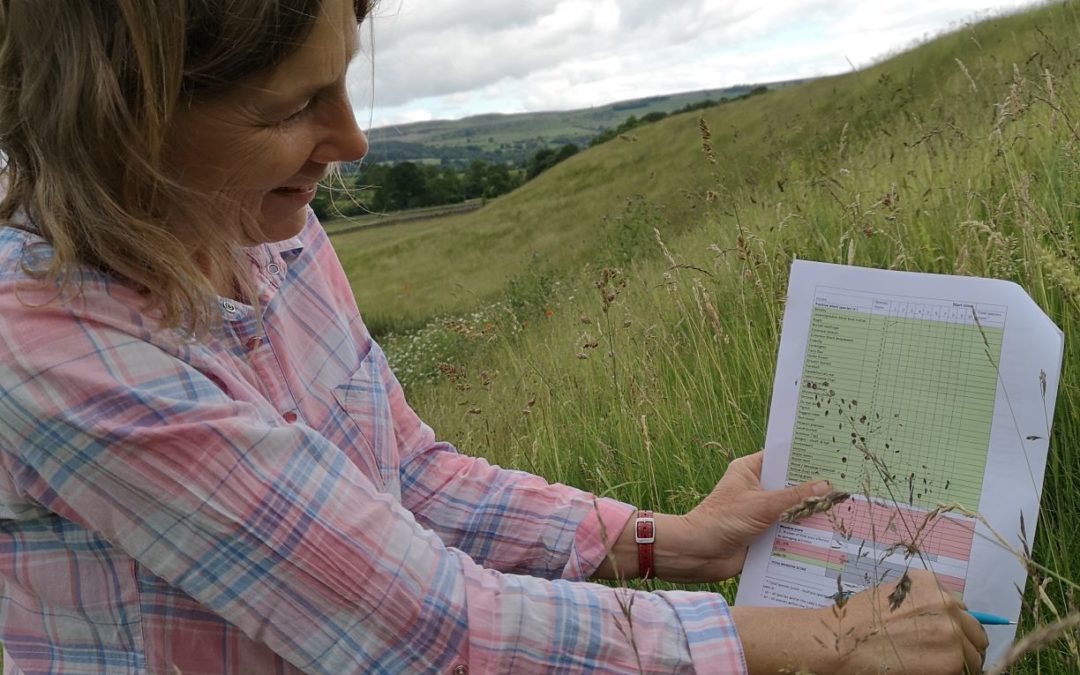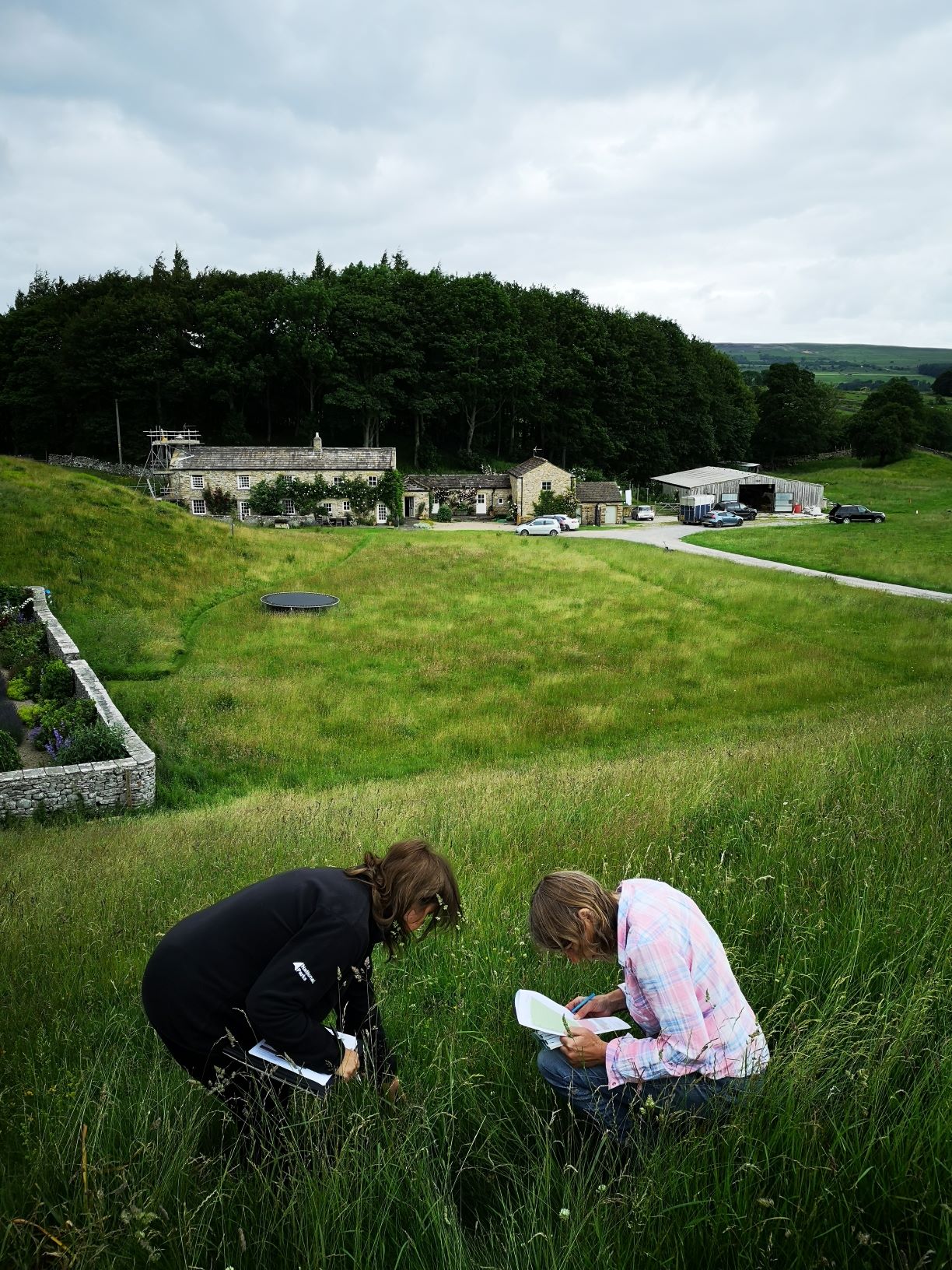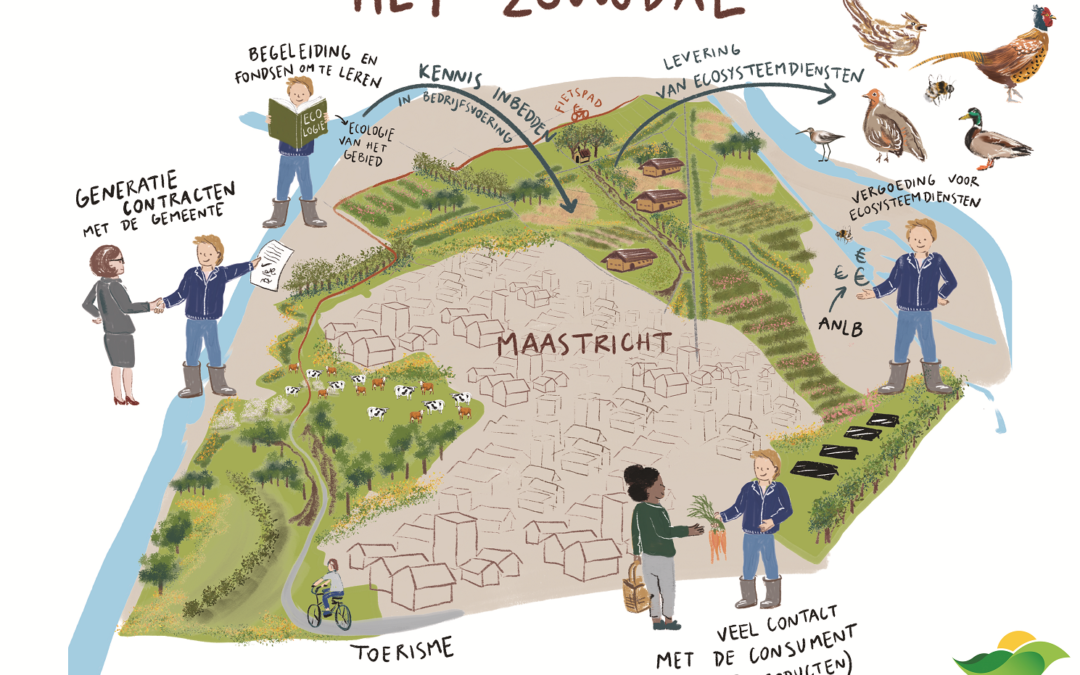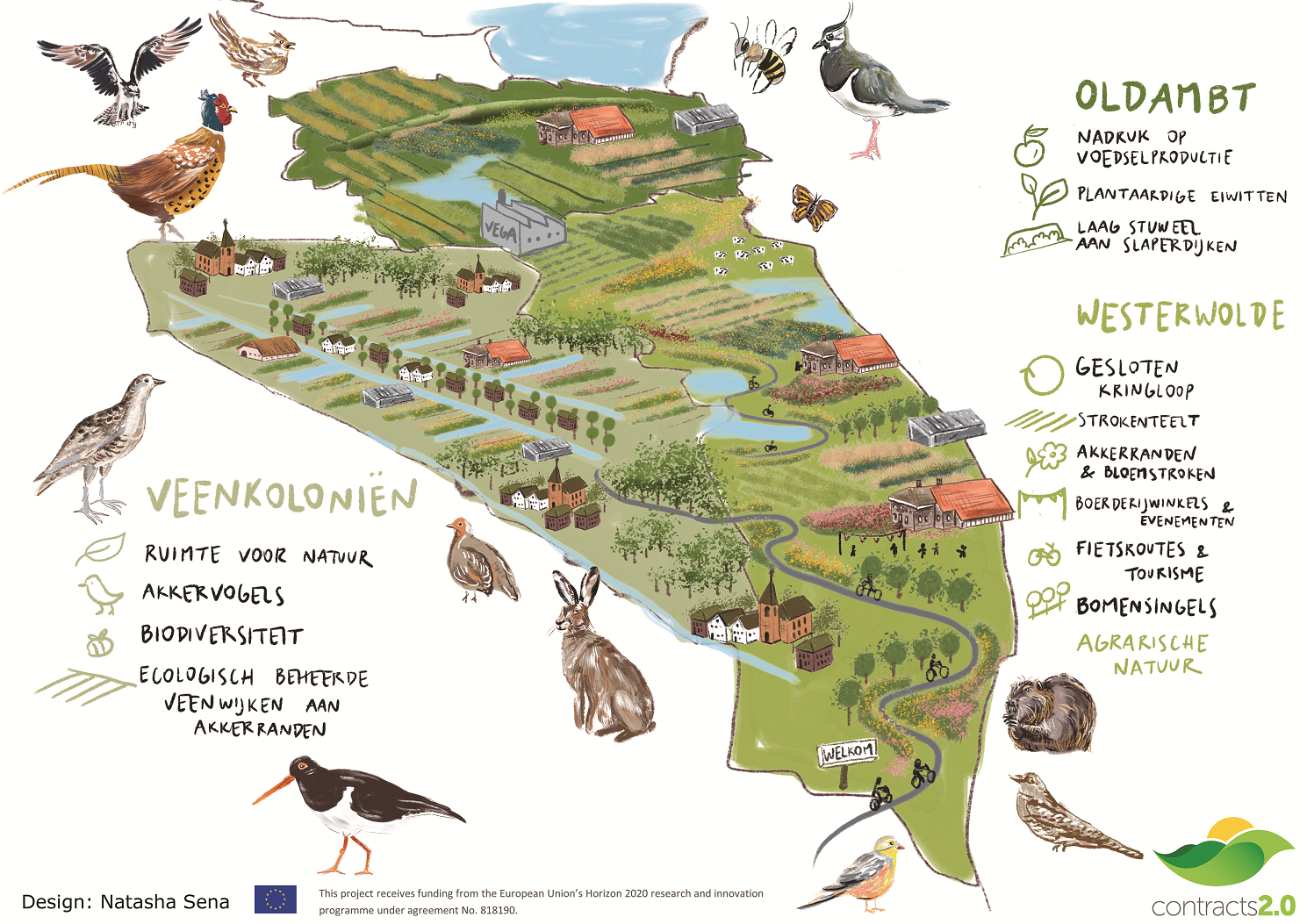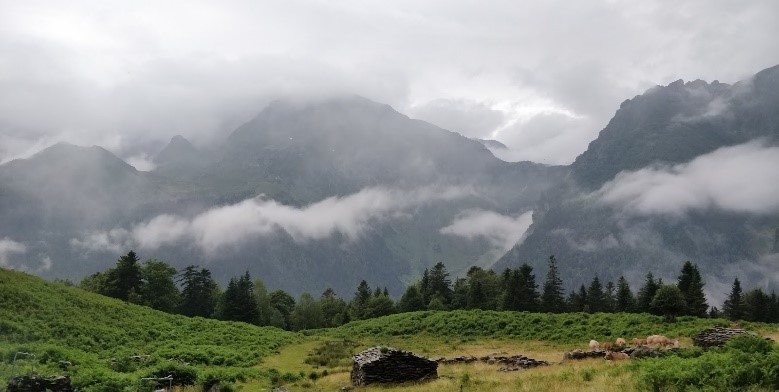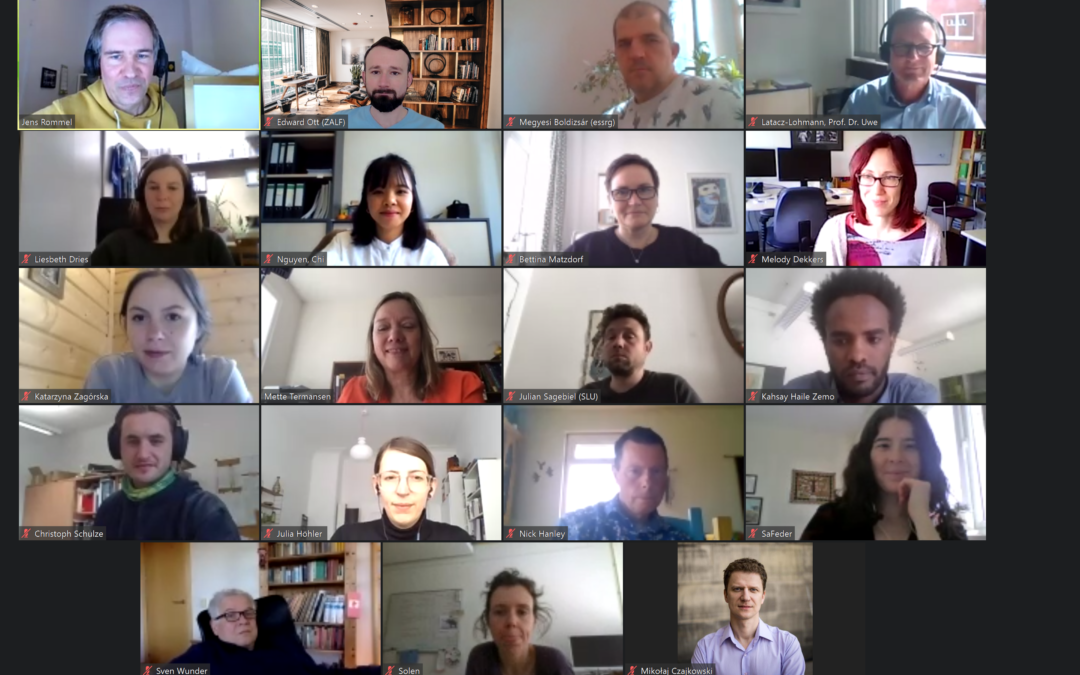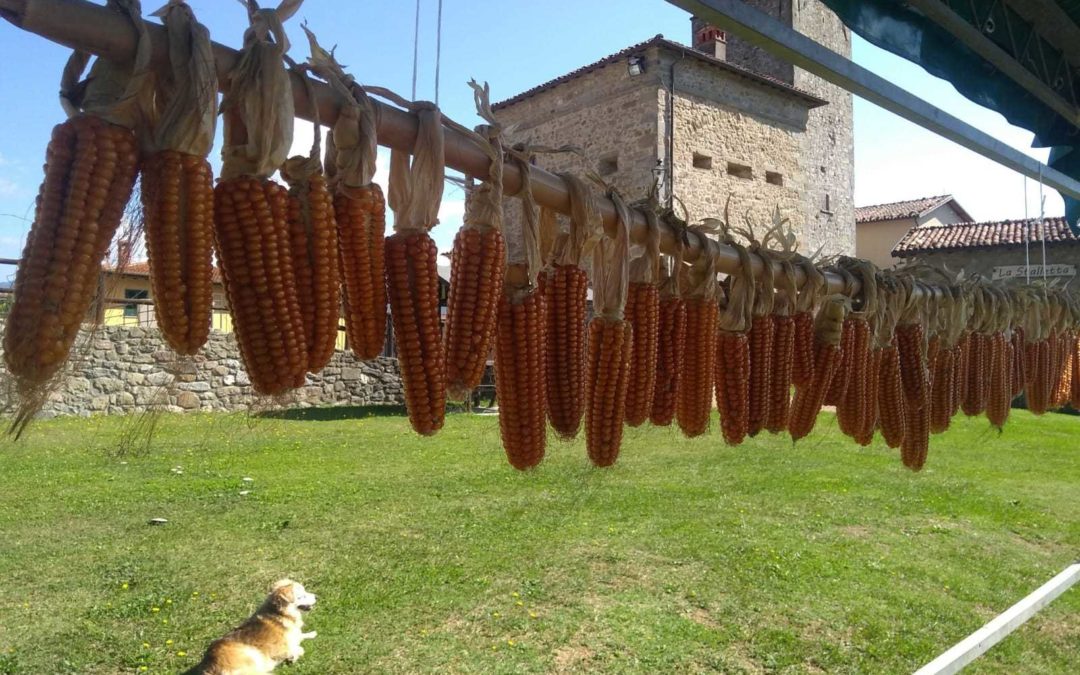The Contract Innovation Labs in the Netherlands worked with an illustrator to produce a visual representation of the “dream farming landscape”, an imagined ideal future for the landscape and its agricultural landuse practices. This tool is used by the Innovation Labs to have a point of departure for identifying the changes that need to happen to make this vision a reality. In this blogpost, BoerenNatuur shares their experience with the process of developing a shared vision of the ideal future of farming.
Written by Lisa Deijl (BoerenNatuur)
Presenting the Dutch case: the collective contract
The Dutch case in Contracts2.0 is unique because it revolves around the only nation-wide fully implemented collective contract-model for nature conservation by farmers in the world. In the Netherlands, since 2016, this collective contract was set up by farmers and the national and provincial governments. Now, there are 40 collectives of 11.000 farmers who carry out this subsidy scheme for nature conservation. BoerenNatuur is the national umbrella organization of the 40 collectives, and the action partner in Contracts2.0. You can read more about what we do here:
As an action partner we are excited to be able to have the opportunity to study, together with research partners from around Europe, how the collective contracts are working and what improvements can be made. These questions we aim to answer in the Contract Innovation Labs.
Setting up Contract Innovation Labs
Just like the other Contracts2.0 actionpartners in 9 European countries, BoerenNatuur established a Contract Innovation Lab in the Netherlands. The Dutch Innovation Lab gathers people that have expertise with this contract model from working as a practitioner in the agricultural sector. In the case of our Labs, these are farmers and employees of the farmers collectives or nature organizations. Because BoerenNatuur is the national umbrella organization of the 40 local collectives, we chose to organize not one but two Innovation Labs in order to get more insight in what different challenges the collective approach meets in different parts of the country. The Labs are located in Limburg (the south of the Netherlands, an area with varied land use and the biggest collective with the most budget and the most members) and in Oost-Groningen (the north of the Netherlands, an area with mostly arable agriculture and a smaller collective). To successfully set up the Innovation Labs within Contracts2.0 and engage local stakeholders, we received a great amount of help from the local collectives Natuurrijk Limburg (NaLi) and Agrarische Natuurvereniging Oost-Groningen (ANOG).
Visualizing the “dream farming landscape” in the Innovation Labs
The end goal of the work in Contracts2.0 Innovation Labs is to make policy suggestions for improved contracts. Formulating an ideal future for the farming landscape is a step towards this, as it helps to pinpoint the changes that stakeholders would like to see. But the process began with analysing the here and now: by carrying out a SWOT-analysis of the contracts under investigation. With all the strengths, weaknesses, opportunities and threats laid out, we had a basis to start imagining the ideal future, the “dream landscape”. It was a very interesting process to try to come up with a coherent view for the local landscape in 2040, especially since there were different actors involved. After a while we were able to come up with a description of the dream landscape in 300 words, that everyone felt comfortable with.
It was then that Lenny van Bussel, our research partner from Wageningen University, suggested that we hire an illustrator to visualize the text describing the agreed upon dream landscape features. We thought it would be a nice gesture to the local stakeholders, to have a tangible product from this project that they had been working on. However, when the picture was presented to the groups, it turned out that people actually still had varying opinions. Apparently, words had hidden the different visions, but an actual visual rendition of the dream landscape drew them out again!
Keeping the conversation going
The reignited debate on the dream landscape in our Contract Innovation Labs was an unexpected result for us organizers. It showed us that working with the illustrator could have been a whole different path to explore when developing the shared vision of the dream landscape. We chose to make some small adjustments to the paintings, but did not aim for a ‘picture perfect’ vision, because this could have taken several more sessions. Instead we approach the visuals as a ‘praatplaat’ (a Dutch word for ‘a picture to use as basis for discussion’). This tool can help us in the discussions around the ideal future landscape and how to get there, especially when we engage with policy makers.
Local and regional policy makers have been involved in the SWOT-analysis of the current contract. However, they have not yet had the chance to react to the CIL’s dream landscape visualization. In the coming months, we will give them the opportunity to do so. First, we will present the visions in separate Policy Innovation Labs to inquire about the chances for the realization of the dream farming landscape. Secondly, over the summer, we hope to be able to organize ‘in person’ workshops in the respective regions with practitioners and policy makers , to present the results of the work we did. We hope that these last workshops serve as an inspiration for local actors to continue working together also beyond the boundaries of this project, and to continue to keep the conversation going.
